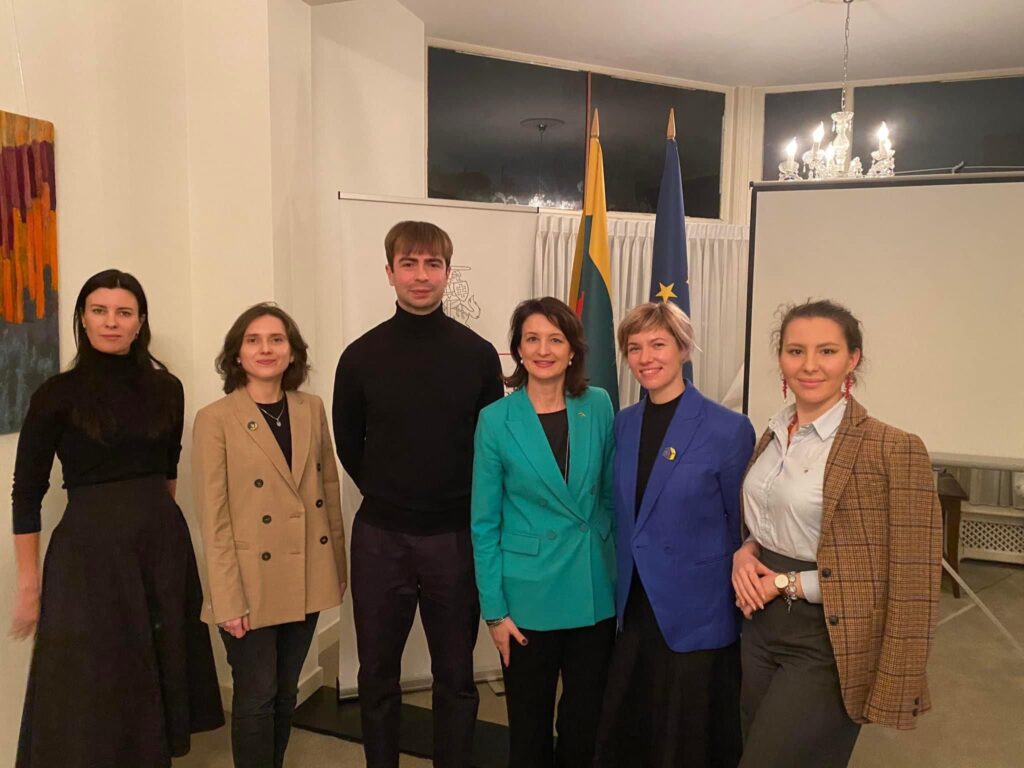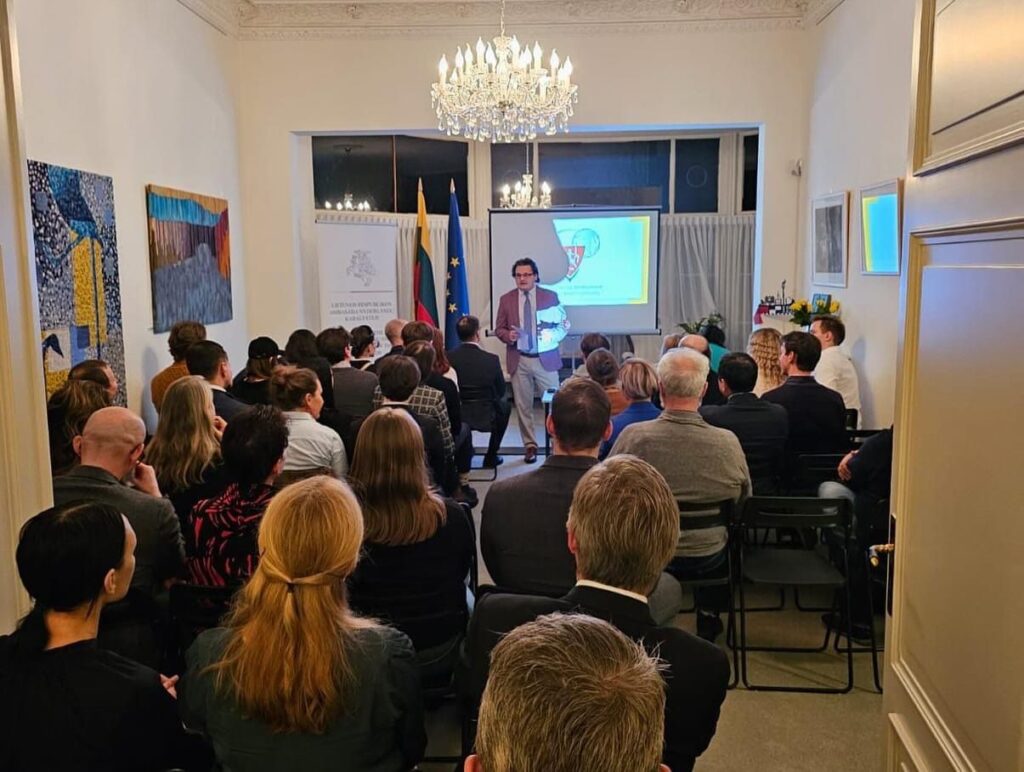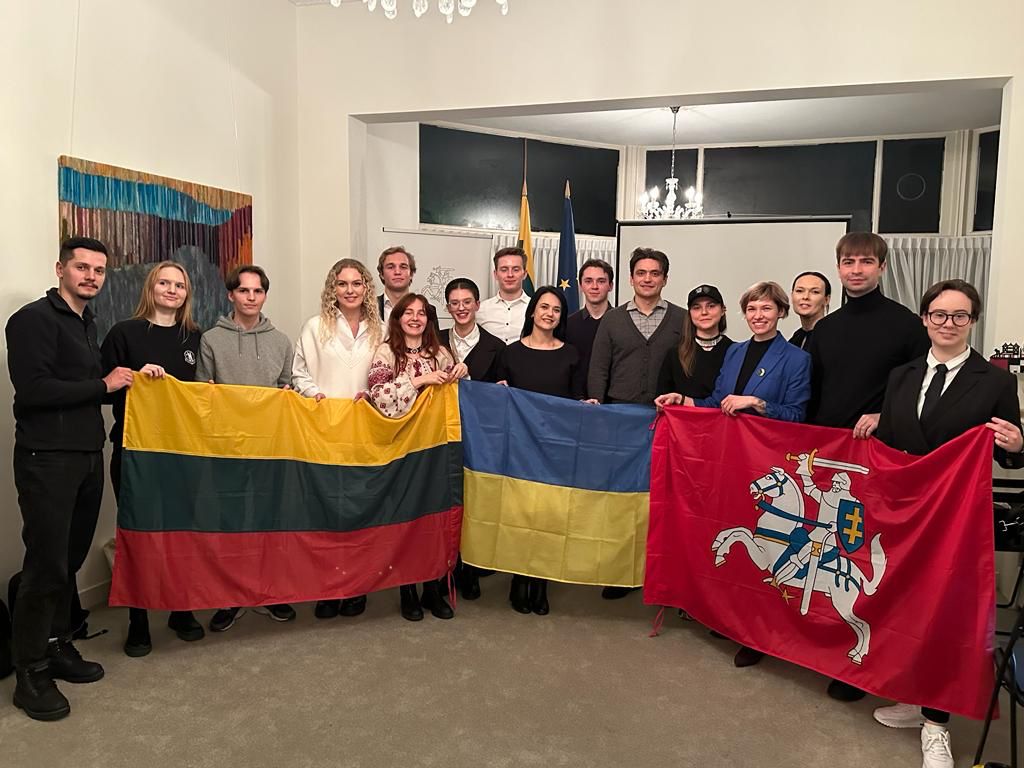After VATAHA’s fruitful networking event in Brussels earlier this month, co-founders Oksana Savchuk and Uliana Bun took to the Lithuanian Embassy in the Hague to continue seeking collaborations with like-minded partners.
The event was opened by the ambassadors of Ukraine and Lithuania to the Netherlands, with representatives from the Litouws Cultureel Centrum, Pasaulio Lietuvių Bendruomenė, Stichting Ukrainians in the Netherlands, the Adriatic-Baltic-Black-Azov Student Association, and Konovalets Station.
“Our role was to forge new connections so that we could work together in the future on joint projects,” Bun explained. Kristina Kupryte, council member at The Council for the Safeguarding of Ethnic Culture in Lithuania, set the tune for the new partnership by performing a Ukrainian song on the kanklės, a traditional Lithuanian folk string instrument.

Different countries, similar histories
In terms of land mass and population, Ukraine’s population is about 14 times larger than Lithuania’s population, and its land mass is nearly 9 times larger. Although not direct neighbors, Ukraine and Lithuania both share a border with Belarus, Poland, and Russia.
After being annexed by the Soviet Union in World War II, both countries declared their independence in 1990-1991, and have since pursued a pro-Western political alignment. In 2004, Lithuania joined both the EU and NATO, both of which Ukraine has applied for membership in the past 18 months. Ukraine and Lithuania are also both part of the OSCE, the WTO, and the Council of Europe.

With similar Slavic heritages, the two also have a rich folk art tradition in embroidery, pottery, and wood carving. “I personally learned that Lithuanian traditions and culture are very, very similar to Ukrainian ones,” said Bun.
“I learned that Lithuanians also color Easter eggs and make Christmas spiders for Christmas,” said Bun. “Before that, I thought that these were exclusively Ukrainian things. We have already planned a meeting to further discuss a possible cultural event before Easter.”
By Anni Schleicher, 30 November 2023
